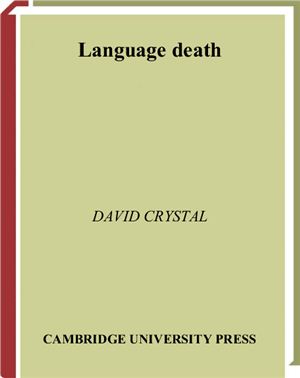Pages: 209
Publisher: Cambridge University Press (2003)
Quality: good: pdf
The rapid endangerment and death of many minority languages across the world is a matter of widespread conce, not only among linguists and anthropologists but among all conceed with issues of cultural identity in an increasingly globalized culture. A leading commentator and popular writer on language issues, David Crystal asks the fundamental question, ‘Why is language death so important?’, reviews the reasons for the current crisis and investigates what is being done to reduce its impact. By some counts, only 600 of the 6,000 or so languages in the world are ‘safe’ from the threat of extinction. On some reckonings, the world will, by the end of the twenty-first century, be dominated by a small number of major languages. Language death provides a stimulating and accessible account of this crisis, brimming with salutary and thought-provoking facts and figures about a phenomenon which – like the large-scale destruction of the environment – is both peculiarly mode and increasingly global. The book contains not only intelligent argument, but moving descriptions of the decline and demise of particular languages, and practical advice for anyone interested in pursuing the subject further.
ISBN 0 511 00859 7 virtual (netLibrary Edition)
Publisher: Cambridge University Press (2003)
Quality: good: pdf
The rapid endangerment and death of many minority languages across the world is a matter of widespread conce, not only among linguists and anthropologists but among all conceed with issues of cultural identity in an increasingly globalized culture. A leading commentator and popular writer on language issues, David Crystal asks the fundamental question, ‘Why is language death so important?’, reviews the reasons for the current crisis and investigates what is being done to reduce its impact. By some counts, only 600 of the 6,000 or so languages in the world are ‘safe’ from the threat of extinction. On some reckonings, the world will, by the end of the twenty-first century, be dominated by a small number of major languages. Language death provides a stimulating and accessible account of this crisis, brimming with salutary and thought-provoking facts and figures about a phenomenon which – like the large-scale destruction of the environment – is both peculiarly mode and increasingly global. The book contains not only intelligent argument, but moving descriptions of the decline and demise of particular languages, and practical advice for anyone interested in pursuing the subject further.
ISBN 0 511 00859 7 virtual (netLibrary Edition)

